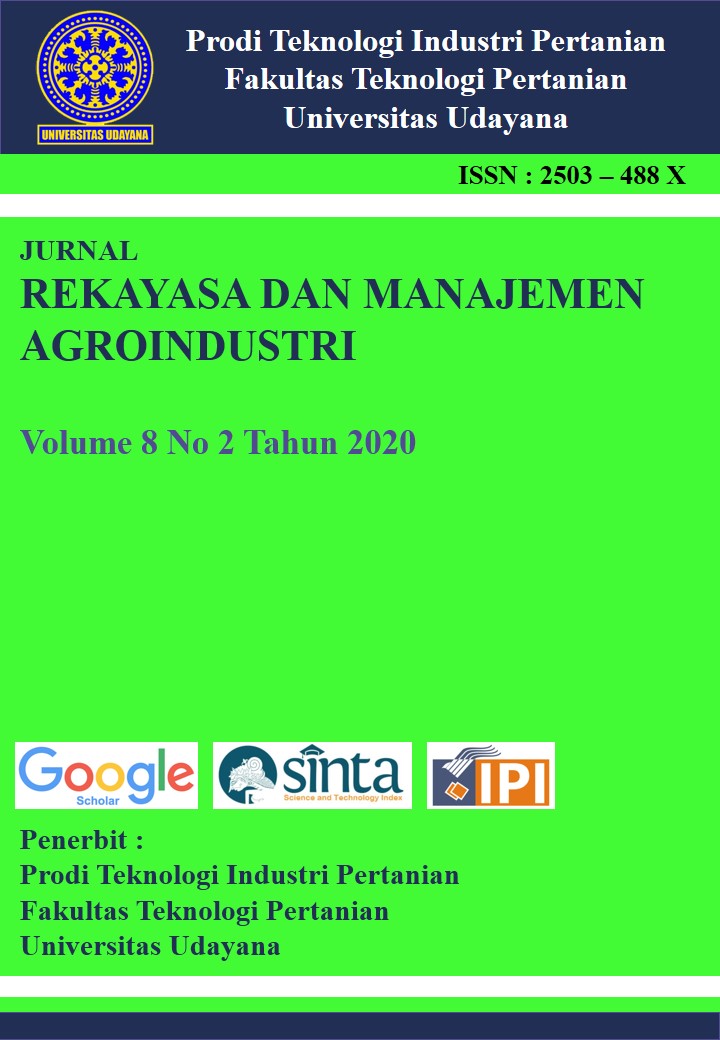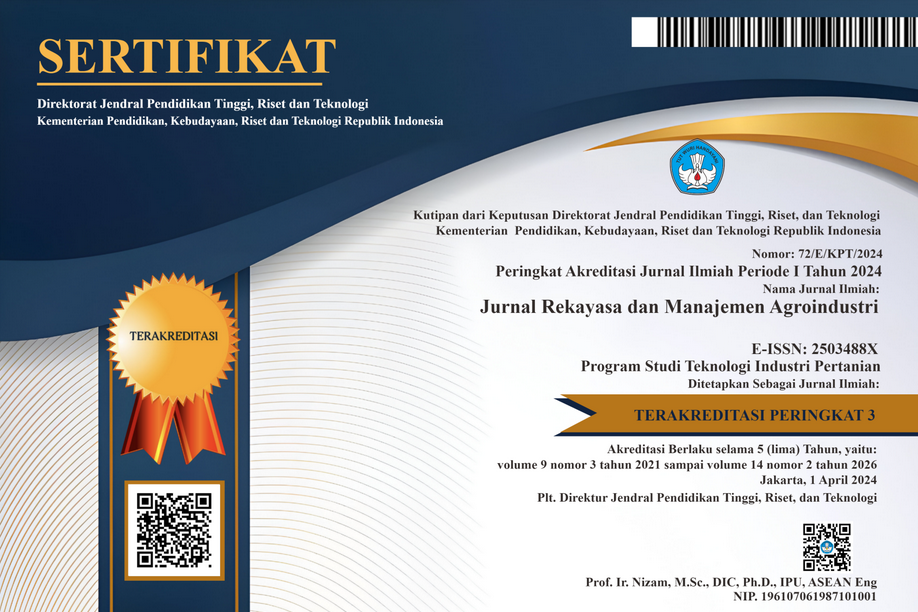Isolasi dan Karakterisasi Bakteri Penghasil Etanol dari Lingkungan Industri Arak Bali di Desa Merita dan Tri Eka Buana, Karangasem-Bali
Abstract
The purpose of this research is isolation and characterization to find potential bacteria which can produce the most optimal ethanol from the Arak Bali industry in Karangasem Regency, Bali. Bacteria were isolated by exposure method in open air using selective media Zymomonas Sucrose Medium (ZSMA) with the addition of nystatin as much as 0.18 g / L as an antifungal then samples were taken at three different points in one Arak Bali production location, namely the distillation place, the fermentation room for roomie, and the place of taking coconut juice under the coconut tree and the variation of time is 15, 30, and 60 minutes of exposure. Gas checking is done on the bacteria obtained to select its ability to produce ethanol. The results of the scanning of 11 best isolates using UV-visible spectrophotometry were fermented on 500 mL ZSM media for 10 days. BM1-CP14 is the best isolate to produce total ethanol of 15.33 mL through the fermentation process. The results of the characterization of BM1-CP14 isolates were Gram-positive bacteria in the form of bacilli, anaerobic and non-motile bacteria. The results showed that bacteria isolated from open-air also can produce ethanol.
Keyword: ethanol, Arak Bali, airborne bacterial exposure, isolation, characterization, UV-Visible spectrophotometry
Downloads

Ciptaan disebarluaskan di bawah Lisensi Creative Commons Atribusi-BerbagiSerupa 4.0 Internasional.
Seluruh artikel di Jurnal ini dapat disebarluaskan atas tetap mencantumkan sumber yang syah. Identitas judul artikel tidak boleh dihilangkan. Penerbit tidak bertangggung jawab terhadap naskah yang dipublikasikan. Isi artikel menjadi tanggung jawab Penulis.














